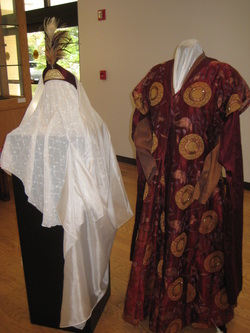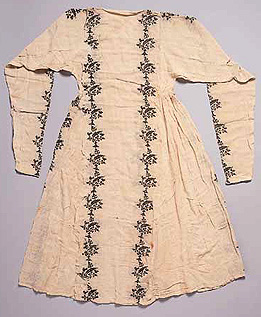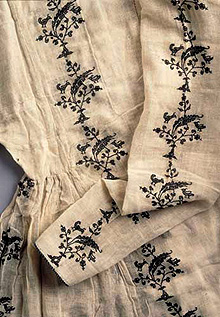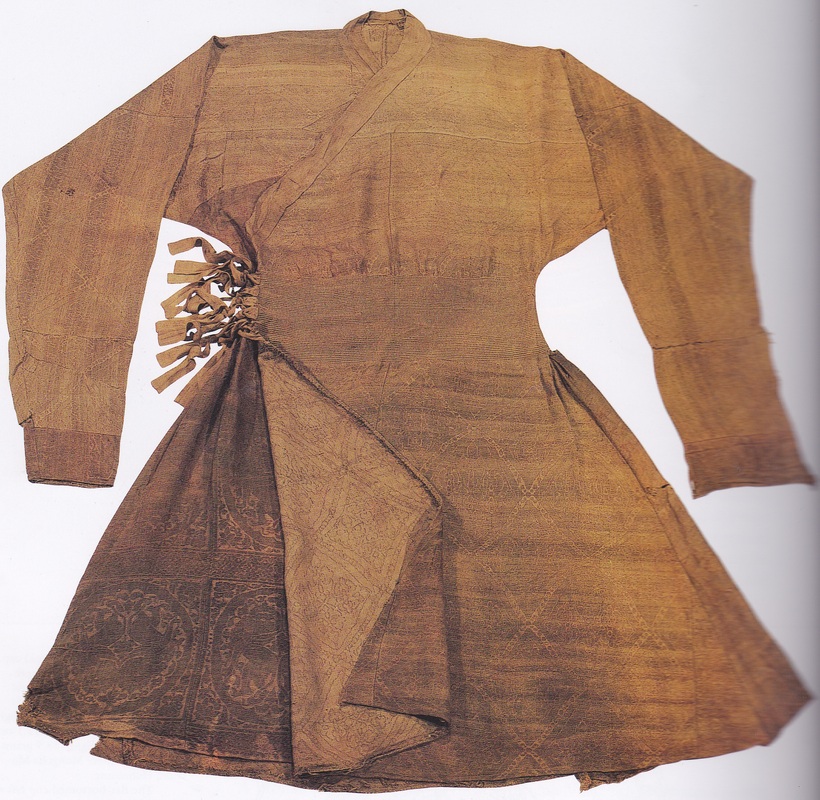
Albert Einstein said, “If we knew what we were doing, it wouldn’t be called research.”
That statement gets at the
heart of the title I chose for the website. When researching history, there is a huge continuum between “we’re convinced that this is a historical fact” and “um, we really have no idea”. The space in between is conjecture. And what I mean by conjecture is not a wild guess.
Conjecture goes something like this: Here is the evidence that I have been able to find, and when I have applied my critical thinking skills and my knowledge and my creativity, this is the way I think it was.
As researchers and historians, we hold the conjectures in a constant state of reflection, knowing that information and insight can come out of nowhere.
I was very fortunate to have my early work encouraged by other researchers who
convinced me that speaking in absolutes is perilous. For once, as a youngster, I followed advice and it saved me, many times.
When I began my research in the mid 1980s, I was told by many people in the historical re-enactment and ethnic dance worlds that no evidence existed for women’s clothing in Central Asia and the Middle East prior to 1600. This is completely, madly, happily incorrect, but we didn’t have the internet and so I did the best I could. I was lucky that I had access to several university libraries. But
if you don’t know what you’re looking for, it is slow going.
Like most researchers of the time, I began with ‘folk costume’ from the 18th, 19th and early 20th centuries to guide me because it was
all I thought was available.
And that is what first got me into trouble with pleats.
Many of the Eastern European and Western Asian modern folk costumes had undershirts that had voluminous, pleated sleeves.
I taught my self, through trial and a ridiculous amount of error, to teach myself to pleat
in my college dorm room using the cramped study desk as my only work surface.
When I tell my textile arts classes about frustration that leads to the throwing of scissors, this is where I developed that bad habit.
Three things happened at about the same time. First, I figured out how to pleat without making myself crazy and I made many of these garments.
Second, other people began asking for my advice on making dance costumes or took their inspiration from me.
Those two things would have been lovely if it weren’t for the third thing. I had
moved to Albuquerque, New Mexico (SCA Kingdom of the Outlands) from
Atlanta, Georgia (SCA Kingdom of Meridies) and those wonderful folks introduced me to Persian miniature paintings and other period resources.
I discovered that I was COMPLETELY WRONG about pleated sleeves. COMPLETELY. WRONG.
So I changed the way I constructed my sleeves to something that was much closer to
the geometric garment construction
methods that I know now are right for the
period. And I tried to make up for providing a bad example. By this time I was teaching classes at other's request and doing the best I could.
And my mentors’ lessons were taking hold.
They taught me to say, “To the best of my knowledge, pleats were not part of the
sewing techniques in Central Asia and the
Middle East until after 1600.” when what I was really thinking was, “Oh my god,
they didn’t pleat, that was completely wrong, they never did it, DON’T
PLEAT!
And it’s a good thing, too, or pleating would have
bitten me a second time.
Hooray for the internet and the fall of the Soviet Union. The fall of the Soviet Union not only brought down political walls, but it brought down a wall between two entire universes of
scholarship.
New information is still being made available to English-speaking researchers that had been available in Russian and other Central Asian languages for many years. And of course, the internet made it much easier to share information.
In the early 2000s, an auction house that specializes in Islamic art and antiquities put the garment below up for auction. The garment is in private hands, so all we have is the auction listing with photos and a description. To my knowledge, no historical costumer has had the opportunity to
examine the garment in person
DO YOU SEE THEM?
THERE ARE PLEATS!
And they are the cleverest pleats I’ve ever
seen.
This is a Mongolian/Persian
undershirt. Mongols and Persians, male and
female, spent the majority of their time on
a horse or sitting on the ground.(I know that's a big generalization, but bear with me!)
And since your body spreads out at the
hips when you take those positions, these
may be the coolest pleats ever.
The pleating is only where you need it, no
wasted fabric, no unnecessary
bulk.
Which leads to my First Rule of Research: The simplest pattern or technique that works elegantly in the environment for which it was developed is probably the most period.
And when I say elegant, I mean in the mathematical or engineering sense. The folks in period where smart, and so were their solutions.
At some point, I’ll tell you the stories about my
Bedouin bedspread epiphany and my
seasonal Persian coat epiphany.
But back to Mongols and Persians and their clever, clever pleats.
Roxanne Farabi and I have both made reconstructions of the undershirt from the photos. We each came up with a slightly
different design, but after some discussion we came to the conclusion that it’s impossible to tell from the photos, but each of our designs is reasonable within the geometric pattern
theory that was used at the time. One of us may be right and the other wrong, but it’s more likely that there was variation within period
and we are both right.
Or we’re both wrong. That would stink.
So I made one of these undershirts and was amazed and gratified about how well it fit
and moved. In addition to providing ease
at the swell of the hips where you need it, the flat front of the garment also keeps the full skirt of your outer coats from binding up between your knees when you take long strides. It’s a brilliant design and it works well.
(You will also note that the embroidery on the
undershirt is blackwork. Most blackwork embroidery books state that blackwork has
Middle Eastern or Islamic roots, but don’t give any proof. The proof exists, it just took a while to find it. We also have extant examples of
very elaborate blackwork from 14th century Egypt. But that is for a later post.)
Suddenly, it seemed like pleats were everywhere. I knew about the North Indian garments that are post-1600 that are made from the waist up as a traditional Mongolian coat, but have gathered/pleated skirts attached at the waist. Without additional evidence, I had concluded that the pleating must be post-1600 and derived from contact with European clothing styles.
Wrong again.
Khan.
There are at least two other Mongolian coats with pleating either on the side like the one above, or entirely pleated. I'll post photos of the others when I track them down.
So, I was wrong about pleats. Twice. What else do I have wrong? Also, what do you do if you think I’m wrong about something else?
Talk to me, show me what you have found, or
tell me your reasoning and we’ll work it out together. Research is a community activity and I’d like this website to be a forum for
discussion.
My thought for this website is as a place for me to post articles, photographs, projects,
links and other stuff. The blog portion is
going to be about the research process, mostly.
Some folks have the idea
that research is dreary and boring, but it’s
not.
I have started asking the people who attend my classes to send me photos of things
they have made and many have kindly done so. I would love to post photographs of the
work that others have done, so if you have sent me a photo, don’t be surprised
if I write you to ask if I can post it.
(It’s ok to say no, I promise to only pout a little.)
Even if you haven’t used my class materials to make something Central Asian, I’d still love to see it.
I would also like some feedback on what you would like to see on this website. I’ll answer as many questions as I can, but I can’t make a
promise on timing. Some simple questions have complicated answers and the reverse is also true. But your questions will help guide
me.



